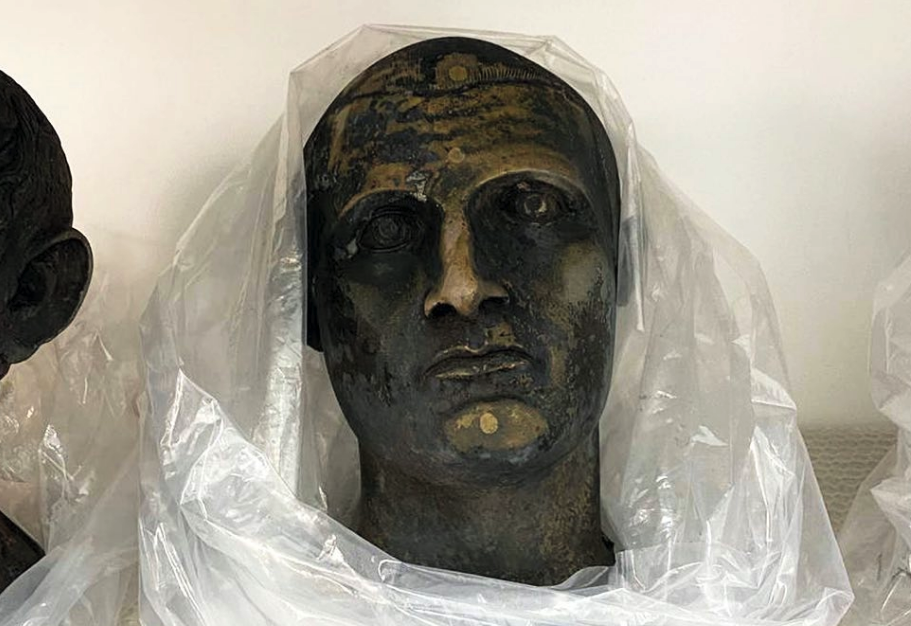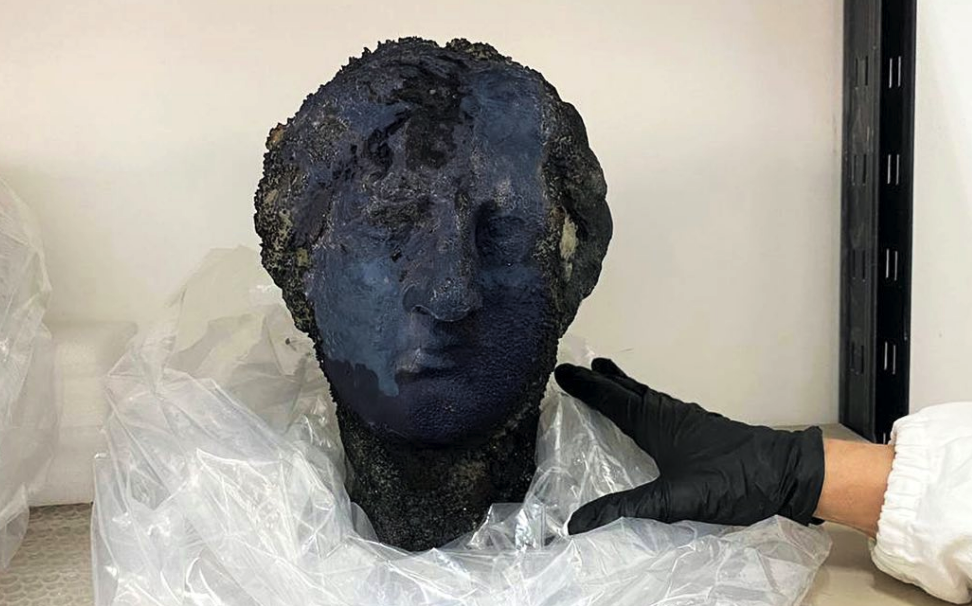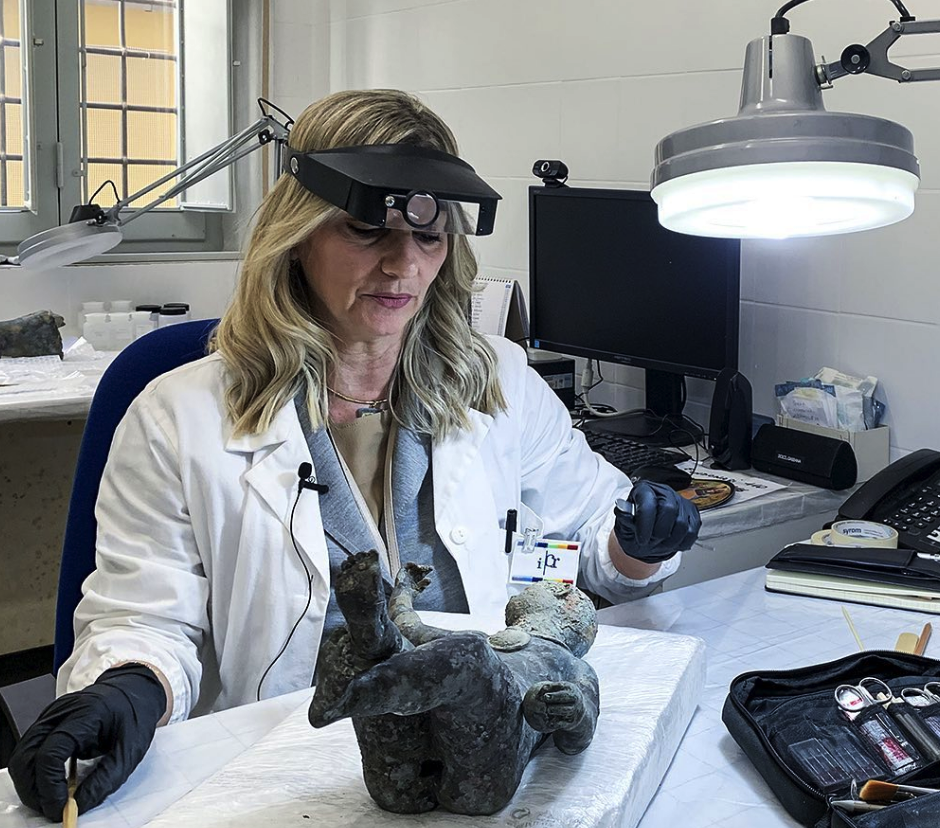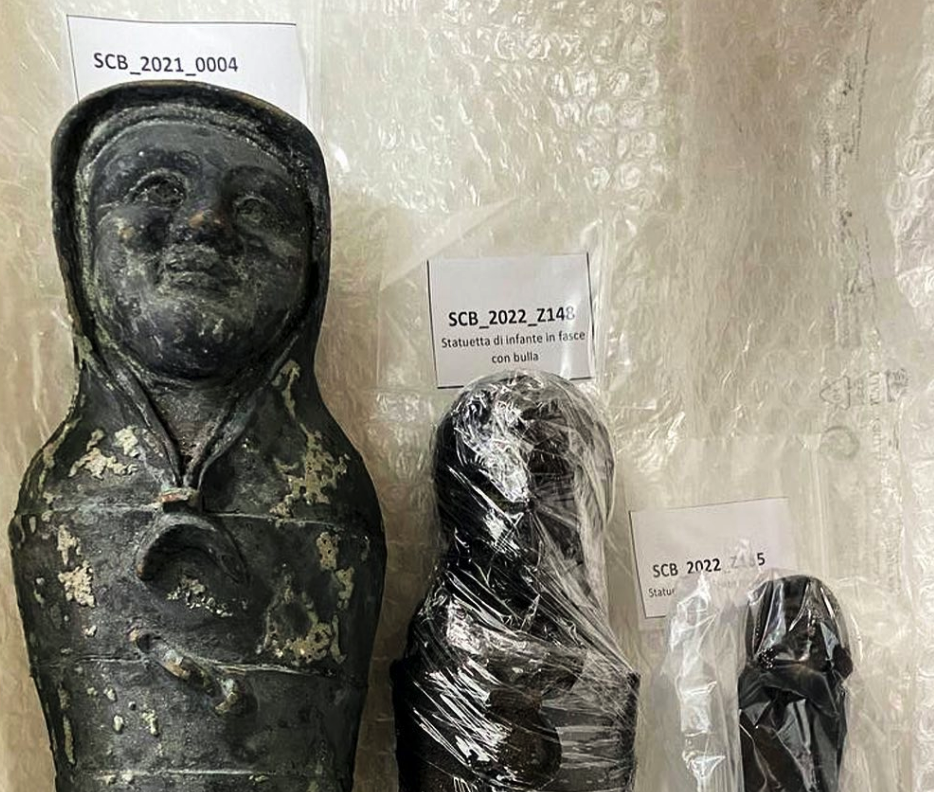More than 20 bronze statues have been discovered in San Casciano dei Bagni, in southern Tuscany, during an excavation campaign that began in 2019.
The perfectly conserved statues, votive offerings and 5,000 gold, silver and bronze coins were unearthed in the dig in the Roman-Etruscan sanctuary connected to the San Casciano dei Bagni hot springs. Helmed by Professor Jacopo Tabolli of the University for Foreigners of Siena and promoted by the Italian Ministry of Culture and the local municipality, the new finds came to light in the first few weeks of October. It has been announced that the Ministry of Culture is funding a new museum to house the artifacts in a sixteenth-century building in San Casciano.

“With its statues, the sanctuary resembles a research laboratory into cultural diversity during antiquity, the only proof of Etruscan and Roman mobility,” explains Professor Jacopo Tabolli. “Compared to the well-known discoveries of ancient bronze alloy statues, such as the famous Orator discovered in Perugia and now on display at Florence’s National Archaeological Museum, what has reemerged from the mud in San Casciano dei Bagni is a unique opportunity to rewrite the history of ancient art and, with it, the history of the shift between the Etruscans and Romans in Tuscany.”

Fifty years after the discovery of the Riace bronzes in Calabria in 1972, it is now San Casciano dei Bagni’s turn to relate the history of Etruscan and Roman age bronze statuary. The Tuscan site is the largest depository of Etruscan and Roman age bronze statues ever to be discovered in Italy and is one of the most important in the whole of the Mediterranean. To date, terracotta was the main material for statues found dating back to this time.
“This is an exceptional find, which yet again confirms Italy as a country of immense and unique treasures,” commented Gennaro Sangiuliano, the country’s new culture minister, on one of his first visits outside Rome to the Central Restoration Institute in Grosseto, where initial studies are being conducted on the bronzes. “The layering of different civilizations is unique to Italian culture.”


The San Casciano bronzes depict the deities who were idolized in the place of worship, in addition to the body parts and organs that the gods were beseeched to heal through the thermal water. Icons of Hygeia and Apollo have emerged from the hot mud in recent wells, as well as a bronze statue that recalls the famous Orator, which was discovered in Perugia and can now be found in the Florence’s National Archaeological Museum.
The exceptional state of conservation of the statues found in the hot springs also ensured the preservation of the Latin and Etruscan inscriptions. Names of powerful Etruscan families from inner Etruria, such as the Perugian Velimna, stand beside Latin inscriptions that mention the aquae calidae (the hot springs of the large baths), in which the statues were located.
Most of these findings date to between the second century BCE and first century AD, a time of major change in ancient Tuscany. The noble Etruscan families dedicated these statues to the sacred water in the sanctuary adjacent to the Bagno Grande (large baths) during an era of conflict between Rome and the Etruscan cities, during a phase in which the expansion of Rome also stood for cultural osmosis.








